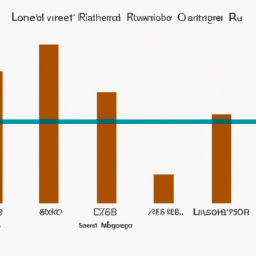Liquidity is an essential aspect of any financial market. It refers to the ease with which a security or asset can be converted into cash. A truly liquid asset can be converted into cash quickly and easily without a significant loss of value. Liquidity is essential for financial institutions, investors, and individuals who want to buy and sell assets quickly. In this article, we will explore the importance of liquidity and its impact on the financial markets.
One of the most significant risks associated with illiquidity is a liquidity trap. A liquidity trap can occur when consumers and investors hoard cash and refuse to spend even when economic policymakers cut interest rates to stimulate the economy. This situation can lead to a recession or even a depression, as the economy becomes stagnant without the flow of cash.
The Basel Committee has designed two liquidity ratios to ensure that financial institutions have sufficient liquidity to meet their obligations in times of stress. The Net Stable Funding Ratio (NSFR) measures the amount of stable funding relative to a bank's assets, while the Liquidity Coverage Ratio (LCR) measures a bank's ability to meet short-term liquidity needs.
Liquid assets are assets that can be quickly converted into cash and can include stocks, bonds, and CDs. There are varying levels of liquidity, and some assets can be more liquid than others. For example, stocks are generally more liquid than bonds as they can be bought and sold more quickly.
The quick ratio is an indicator of a company's short-term liquidity position and measures their ability to meet its short-term obligations with its most liquid assets. The quick ratio does not include inventory or other assets that may take time to liquidate, making it a more conservative measure of a company's liquidity.
In the world of cryptocurrency, liquidity is a crucial factor. The term refers to a collection of tokens or digital assets locked in a smart contract that provides essential liquidity to decentralized exchanges. This concept is known as liquidity pools, and it allows for seamless and efficient trading of digital assets.
The current ratio measures a company's ability to cover its short-term liabilities due in one year by liquidating its current assets. The current ratio is a more comprehensive measure of a company's liquidity than the quick ratio, as it includes inventory and other assets that may take time to liquidate.
The SEC on Monday proposed rules that would force more trading firms to register as dealers and open their books to far greater regulatory scrutiny. The move is aimed at increasing transparency and reducing risk in the financial markets, particularly in the area of high-frequency trading.
Financial liquidity is the measurement of how quickly an asset can be converted to cash. Liquidity impacts companies, individuals, and financial institutions in different ways. For example, a company with high liquidity may be able to take advantage of investment opportunities, while an individual with low liquidity may struggle to pay bills or meet other financial obligations.
In conclusion, liquidity is a critical aspect of the financial markets. The ability to convert assets into cash quickly and easily is essential for financial institutions, investors, and individuals. Understanding liquidity ratios and the importance of liquidity pools in the world of cryptocurrency is essential for investors looking to maximize their returns. As the SEC proposes new rules to increase transparency and reduce risk in the financial markets, the importance of liquidity will only continue to grow.
Ticker: None
